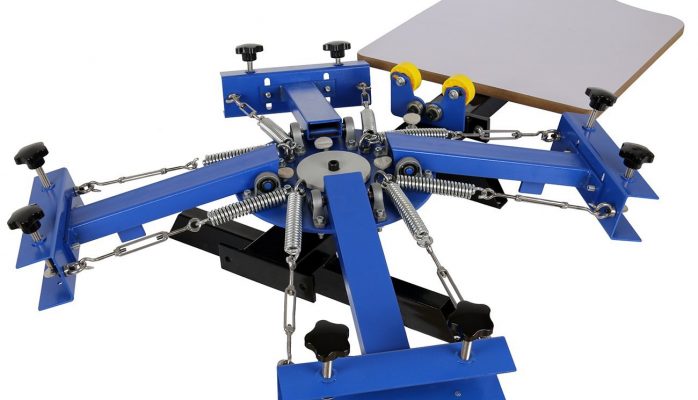Industrial Secrets about Screen Printing: As a professional screen printer, you must know all the facts and secrets about your work.
Many screen printers are confused about the various facts and features of what screen printing can do beyond ordinary screen printing.
Problems Found among the Screen Printing Machine Users
Some ideal techniques for using screen printing machines can alter some aspects of the printing artwork. Screen printing is not a difficult task at all. Among screen printing machine users, we generally find a problem with printing white, while printing colors is simple.
White print ink is rough and thick, making it somewhat challenging to use. Do you know why this happens and how to solve it? Neither the white ink nor your printing work is guilty of that, and it happens to the screen printing press you use. For that, you don’t need to thin the ink. During the printing process, you need to apply certain techniques and modify specific elements.
4 Color 1 Station Silk Screen Printing Machine, Screen Printing Press, DIY T-Shirt Printing Machine, The Adjustable Double Spring Devices
Five secrets below may be helpful for your screen printing process.
Garments that You Should Use in Screen Printing For White Ink
When starting your screen printing machine, use a light or shiny garment instead of a dark one, as the thick white ink can become a block or a roadblock for dark clothes within a few minutes. You may have done your work incorrectly, or you may have used thin ink.
Using White or Black Ink According to Density and Pigment
Understanding the density and pigment is crucial for screen printing. According to this, you should print on a lighter color garment with black ink. Blank ink requires less pigment than white ink, as black ink is simpler and thinner than white ink.
Adjust the Screen-to-Screen Printing Machine
You want to set up white or black ink on your desired garment. You need to select a proper mesh size (ranging from 110 to 156), choose the appropriate thickness, and set the lower mesh screen and higher mesh screen to have smaller holes for ink pushing. Then, you need to adjust the screen to the press (1/8-1/16 inch).
Using the off-contact tab to print properly
The off-contact is the distance between the print garment and the mesh. It helps the screen mesh take the ink upward, clear it, and make a good print. You can use the white ink as an off-contact tab and set it on the screen through all the printing strokes. Sometimes, a few problems arise due to a lack of proper contact. The low-off contact can’t clear the screen well.
To print a quality shirt through your t-shirt screen printing machine, you need to see the screen mesh bounce off the shirt.
Your work will be rough if the ink stays in the screen mesh. To solve this kind of problem, your off-contact needs to be up a little bit. Taking a mesh that is too high raises another issue. At the far end of the spectrum, you must push the off-contact downward very hard to achieve a quality print.
Managing the Printing Stroke
The Printing stroke means moving the squeegee along the screen printing screen. Printing Stroke is the force that pulls the ink through the screen mesh and controls the squeegee’s speed, release, pressure, and angles.
A screen printer should pull the squeegee at a low angle for the print stroke through the screen mesh. A new printer should focus intensely on pressure and must not press the squeegee against the mesh. Printers should stand on the press, apply pressure, and then move the squeegee back. While printing, you must know the speed of the squeegee, and it mustn’t be too slow to release appropriately.
Besides these, you must follow additional techniques. It would help if you used a multi-station screen printing machine instead of a single-station machine. Ink will not be released if the ink is too hot. The print area should be 320 degrees and 45 seconds.
Read More Related Articles:
- How to Select the Right Frame or Mesh for a Screen Printing Machine
- How to Choose the Best Manual Screen Printing Machine?


Leave a Reply
You must be logged in to post a comment.